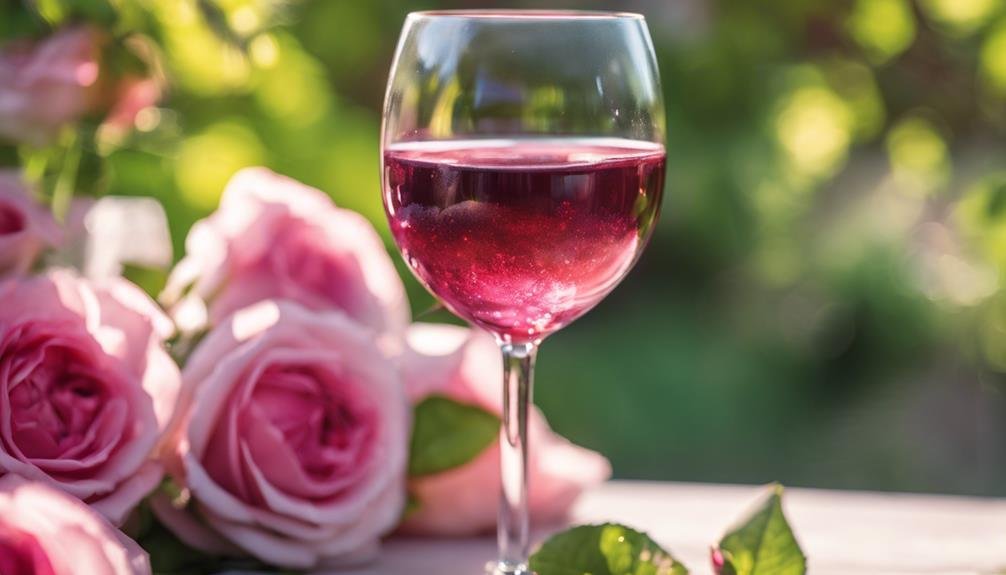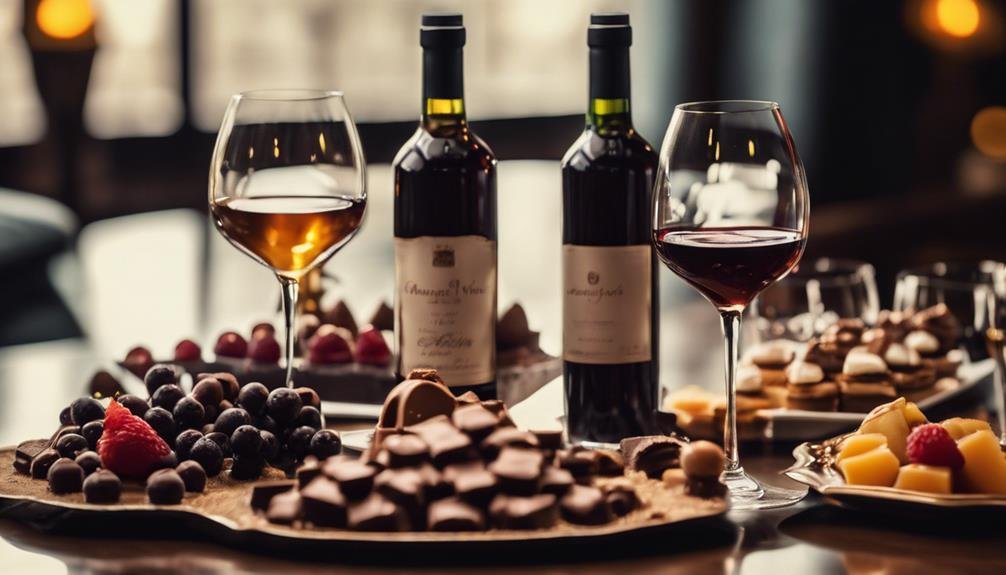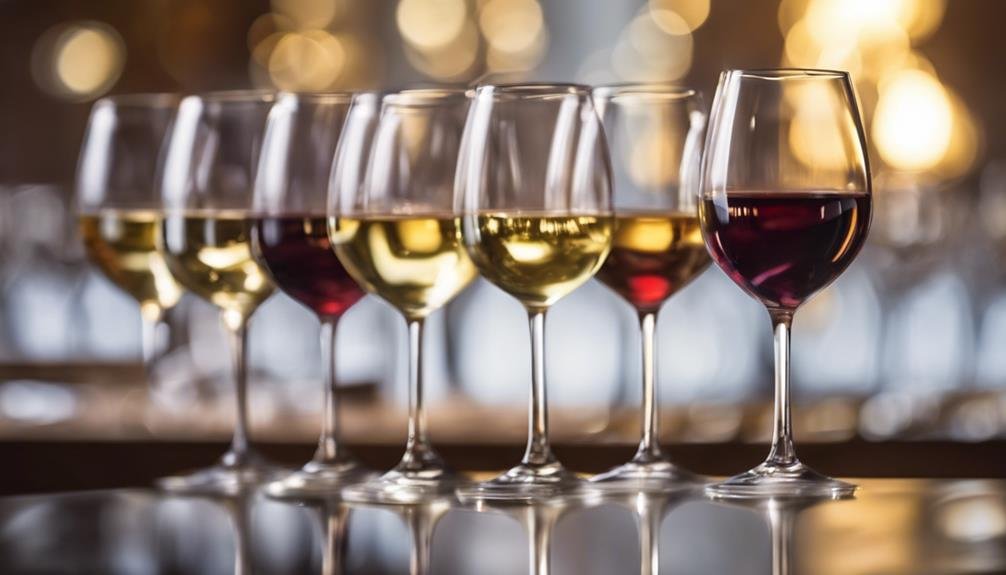Explore the diverse world of wine styles, from elegant Sparkling Wines like Champagne to bold Reds such as Syrah/Shiraz. White Wines like Pinot Gris and Chardonnay offer light to full-bodied options, perfect for seafood or rich dishes. Rosé wines, from sweet to dry, are ideal for versatile food pairings and summer enjoyment. Red Wines range from light Pinot Noir to full-bodied Merlot, showcasing unique regional flavors. Indulge in Dessert Wines like Port for a luxurious finish to a meal. Discover how each style offers a distinct tasting experience that elevates wine appreciation to new heights.
Sparkling Wines
The world of sparkling wines, originating in France and particularly associated with the Champagne region, presents a myriad of technically challenging and time-intensive wine styles that cater to diverse palates and celebratory occasions.
Sparkling wines undergo a meticulous production process involving secondary fermentation to create effervescence, providing a delightful sensory experience. Varieties like Brut-level Cava, Prosecco, Crémant, or American bubbly offer different tasting notes ranging from crisp citrus to creamy brioche, suitable for various food pairings.
These wines also boast excellent aging potential, with some improving in flavor complexity over time. Whether sipped on its own or paired with dishes, sparkling wines add a touch of elegance to any celebration, making them a versatile and enjoyable choice for wine enthusiasts.
White Wines
Originating from various cool climate regions, white wines encompass a diverse range of styles and characteristics that cater to different preferences and food pairings. Light-bodied white wines like Pinot Gris and Sauvignon Blanc are known for their green herbal flavors, ideal for pairing with a variety of dishes. These wines thrive in cool climates, showcasing zesty characteristics that complement seafood and salads.
In contrast, full-bodied white wines such as Chardonnay exhibit rich and smooth tastes, often achieved through special winemaking techniques like oak-aging. These wines, originating from regions like California and Italy, offer a different experience with subtle creaminess. Understanding the flavor profiles and winemaking techniques behind white wines can enhance the dining experience and appreciation for these versatile beverages.
Rosé Wines

White wines offer a diverse range of styles and characteristics, each catering to different preferences and food pairings, and now we shift our focus to Rosé Wines. Rosé wines are made by dying a wine briefly with red wine grape skins, offering a range of styles from sweet to dry. Classic dry rosé versions from Southern France with Grenache, Syrah, Carignan, and Mourvèdre provide subtle elegant flavors. Popularized in the late 1700s with Claret wines, rosés are versatile for food pairings, especially ideal for summer sipping. Below is a table showcasing some popular rosé wines:
| Wine | Origin | Food Pairings |
|---|---|---|
| Provence | France | Light salads, seafood |
| White Zinfandel | United States | BBQ, spicy dishes |
| Tempranillo | Spain | Tapas, grilled meats |
| Pinot Noir | Oregon, USA | Soft cheeses, charcuterie |
| Sangiovese | Italy | Pizza, pasta dishes |
Red Wines
Red wines encompass a diverse array of styles and flavors, making them highly sought-after choices among wine enthusiasts worldwide. These wines range from light-bodied options like Pinot Noir and Gamay Noir to full-bodied selections such as Syrah/Shiraz and Cabernet Sauvignon.
Medium-bodied red wines like Grenache and Merlot offer a balance of flavor and acidity, making them versatile for food pairings. Regional differences contribute to the unique tasting notes found in red wines, with varietals like Sangiovese showcasing Italian elegance and Zinfandel reflecting California's bold fruit characteristics.
Red wines also have notable aging potential, with some varietals developing complex flavors over time. Understanding these nuances can enhance the enjoyment of red wines with diverse food pairings and exploration of regional differences.
Dessert Wines

Dessert wines encompass a wide range of flavors and styles, offering a luxurious and indulgent experience for wine enthusiasts. These bold wines range from dry to sweet, with intense flavors that make them some of the most esteemed in the world.
Examples like Port and Sauternes-styled wines showcase the richness and complexity that dessert wines can offer. When considering a Sauternes pairing, its luscious sweetness and vibrant acidity make it a perfect match for blue cheeses, foie gras, or even fruity desserts.
The bold flavors of dessert wines provide a unique tasting experience that is perfect for ending a meal on a high note. Whether you prefer a sweet finish or a more nuanced dessert wine, exploring this category can elevate your wine appreciation to new heights.
Fortified Wines
Discovering the world of fortified wines reveals a spectrum of rich and diverse flavors that captivate the palate with their unique profiles and storied origins.
Sherry, a Spanish fortified wine, boasts nutty, caramel, and saline flavors, while Madeira from Portugal offers caramel, nuts, and dried fruit notes. Marsala, an Italian fortified wine, delights with flavors of fig, caramel, and spice. Vermouth, often used in cocktails, presents herbal and spice notes.
Port, a versatile fortified wine available in various styles from dry to sweet, is a delightful choice for many occasions. When exploring fortified wines, consider pairing suggestions like rich cheeses, nuts, or dark chocolates. Tasting notes may include hints of dried fruits, nuts, and complex spices, offering a truly luxurious experience.
Aromatic Wines

Exploring the world of aromatic wines unveils a sensory journey filled with enchanting scents and unique flavors. Aromatic wines are known for their alluring floral aromas and invigorating citrus scents. Here is a comparison table showcasing some popular aromatic white wines:
| Aromatic White Wines | Aromas |
|---|---|
| Gewürztraminer | Lychee, rose petal |
| Viognier | Peach, apricot, honeysuckle |
| Muscat/Moscato | Grapey, floral, citrus |
| Torrontés | Rose, geranium, citrus |
| Riesling | Floral, honey, petrol |
These wines offer a delightful experience with their vibrant and aromatic profiles, making them a perfect choice for those who appreciate the allure of floral and citrus notes in their wines.
Light Vs. Full-Bodied Wines
Light and full-bodied wines showcase unique characteristics when it comes to flavor intensity and mouthfeel, appealing to different tastes among wine enthusiasts. Light-bodied wines such as Pinot Noir and Albariño are perfect for summer sipping, offering invigorating crispness and flavors of red fruits or citrus. These wines pair well with light dishes like salads, seafood, and grilled vegetables.
On the other hand, full-bodied wines like Cabernet Sauvignon and Malbec are bold choices with rich dark fruit flavors and firm tannins, ideal for pairing with hearty meals like steak or roasted meats. Their depth and complexity make them suitable for cooler evenings or special occasions, providing a luxurious drinking experience.
Both light and full-bodied wines cater to diverse preferences and occasions, adding depth to the world of wine enjoyment.
Frequently Asked Questions
Can You Age Sparkling Wines Like You Can With Red Wines?
Aging sparkling wines differs from red wines due to their production methods. Sparkling wines don't typically improve with age like reds. The effervescence and delicate flavors of sparklers are best enjoyed fresh, while red wines develop complexity and character over time.
What Makes Dessert Wines Different From Regular Sweet Wines?
Dessert wines differ from regular sweet wines due to their intense flavors and bold profiles. They often undergo specific production techniques like late harvesting or fortification. Pair them with rich desserts or strong cheeses. Some varieties age exceptionally well.
Do All Fortified Wines Have High Alcohol Content?
Fortified wines vary in alcohol content depending on the winemaking process. While many fortified wines have high alcohol levels due to fortification, sweetness levels can also play a role. Each style offers unique characteristics in alcohol strength and flavor profile.
Are Light-Bodied Wines Always Lower in Alcohol Than Full-Bodied Wines?
Light-bodied wines are not always lower in alcohol than full-bodied wines. Alcohol levels in wine are influenced by factors beyond body style, such as grape variety, winemaking techniques, and climate. It is crucial to take into account these variables.
How Are Aromatic Wines Different From Other Wine Styles?
Aromatic wines differ by emphasizing intense aromas from specific grape varietals like Gewürztraminer, Viognier, and Muscat, showcasing floral, fruity, and spicy scents not found in other styles. These wines offer unique flavor profiles and aging potential.
Conclusion
To sum up, the diverse array of wine styles offers a fascinating journey through the world of oenology. From the effervescence of sparkling wines to the richness of reds and the sweetness of dessert wines, each varietal presents a unique sensorial experience waiting to be explored.
With a tapestry of tastes and aromas to uncover, wine enthusiasts can indulge in the craftsmanship and artistry of winemaking, discovering hidden gems within each glass.
Cheers to the endless possibilities that the world of wine styles has to offer.